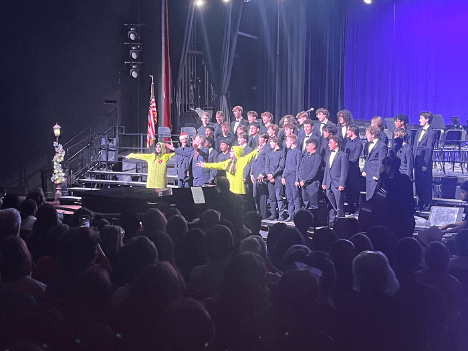NASA Exhibit ‘Here, There, and Everywhere’ to Land in October

Audio By Carbonatix

M82 is a galaxy where stars are forming at rates that are tens or even hundreds of times higher than in a normal galaxy. In this Chandra image (where low, medium, and high-energy X-rays are colored red, green, and blue respectively), M82 is seen nearly edge-on with its disk crossing from about 10 o'clock to about 4 o'clock. There are over a hundred point-like X-ray sources, some of which are likely black holes pulling matter from companion stars. Supernovas have produced the large bubbles of hot gas that extend for millions of light years to the upper right and lower left of the galactic disk. Submitted image.
The exhibit arrives at The New Children’s Museum in West Hartford on Oct. 4.
Submitted by Jennifer Toone

M82 is a galaxy where stars are forming at rates that are tens or even hundreds of times higher than in a normal galaxy. In this Chandra image (where low, medium, and high-energy X-rays are colored red, green, and blue respectively), M82 is seen nearly edge-on with its disk crossing from about 10 o’clock to about 4 o’clock. There are over a hundred point-like X-ray sources, some of which are
likely black holes pulling matter from companion stars. Supernovas have produced the large bubbles of hot gas that extend for millions of light years to the upper right and lower left of the galactic disk. Submitted image.
What do a volcano and a black hole have in common? Are there shadows in space? Why are some galaxies shaped like hurricanes? How are bees on Earth and exploding stars in space connected? Find the answers to these cosmic questions as an exciting new exhibit “Here, There, and Everywhere” lands at The New Children’s Museum in October.
On display from Oct. 4-26, the dramatic images in this exhibit illustrate how familiar phenomena on Earth and across the Universe are connected by basic physical laws. Visitors will compare visual photos from the human scale on Earth to some of the largest structures in the cosmos.
“This is a great opportunity for people to come to The New Children’s Museum and learn about amazing connections in science,” said Noreen Grice, Manager of the Travelers Science Dome at the Gengras Planetarium. “The visual images are stunning and the accompanying tactile images allow visitors to learn through touch.”
The museum is home to over 100 live animals, hands-on science exhibits, out-of-this-world digital planetarium shows, and programs for younger children and families. The Children’s Museum and Roaring Brook Nature Center are the region’s premiere destinations for science and nature exploration.
The Children’s Museum is located at 950 Trout Brook Drive in West Hartford and at Roaring Brook Nature Center in Canton. More information is available at www.TheChildrensMuseumCT.org.



